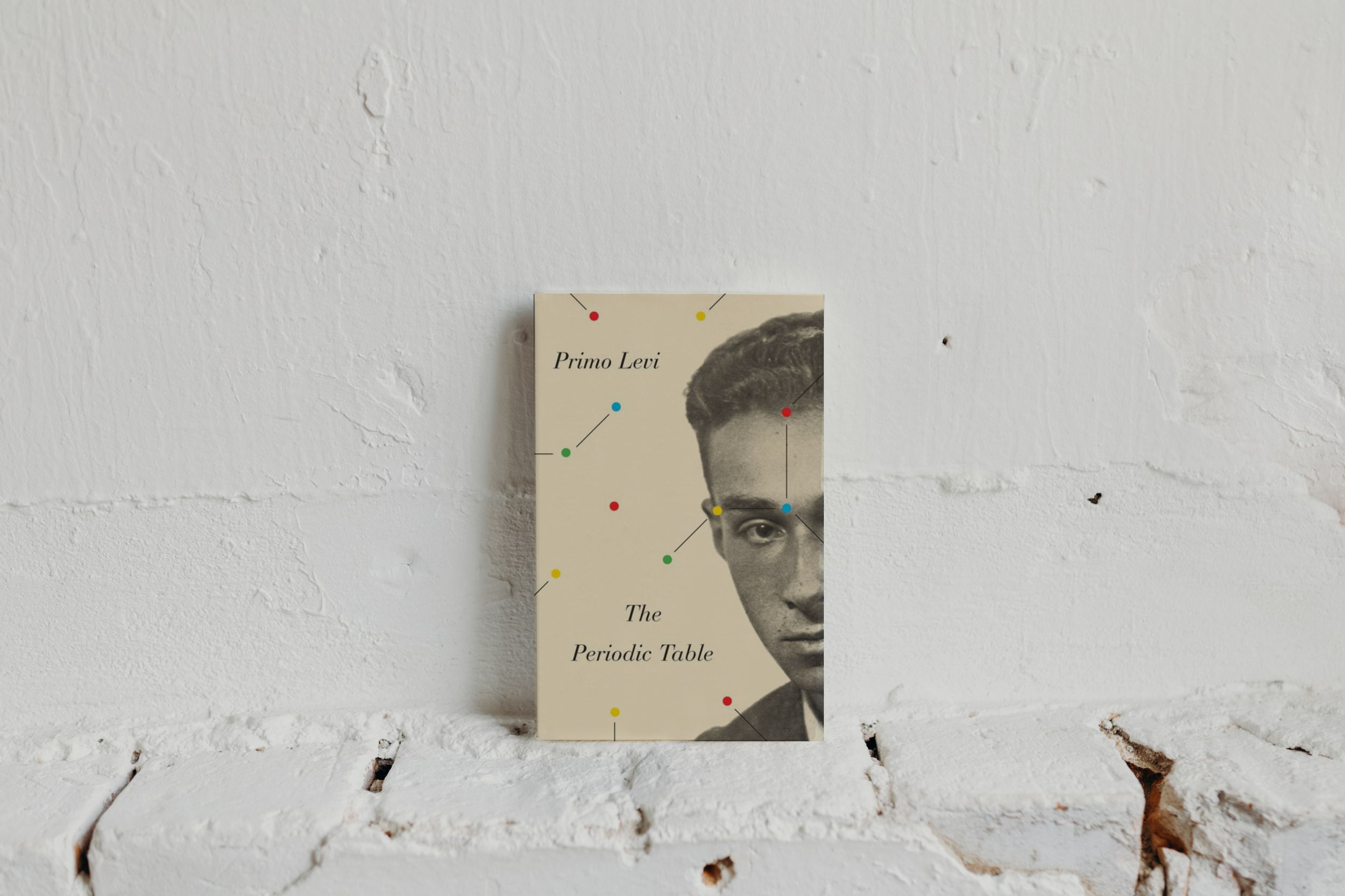The Periodic Table by Primo Levi
“It is again among us, in a glass of milk. It is inserted in a very complex, long chain, yet such that almost all of its links are acceptable to the human body. It is swallowed; and since every living structure harbors a savage distrust toward every contribution of any material of living origin, the chain is meticulously broken apart and the fragments, one by one, are accepted or rejected. One, the one that concerns us, crosses the intestinal threshold and enters the bloodstream: it migrates, knocks at the door of a nerve cell, enters, and supplants the carbon which was part of it. This cell belongs to the brain, and it is my brain, the brain of the me who is writing; and the cell in question, and within it the atom in question, is in charge of my writing, in a gigantic miniscule game which nobody has yet described. It is that which at this instant, issuing out of a labyrinthine tangle of yeses and nos, makes my hand run along a certain path on the paper, mark it with these volutes that are signs: a double snap, up and down, between two levels of energy, guides this hand of mine to impress on the paper this dot, here, this one” Page 232
Levi walks us into the micro structures of his life and the relationships he has cultivated through his encounters with the others by using the elements in periodic table both literarily and metaphorically. Through his excellent storytelling skills, the elements in Periodic Table, gain an agency, so much so that they walk us from Levi’s childhood and familial relations to his imprisonment in Auschwitz, his lost relationships and then later on his serendipitous encounters with one of his Nazi executers. He draws an astounding parallel between the micro dynamic of his day to day experiences and every element that leads to this experience or represent these dynamics.
Levi begins his book with Argon, an inactive and hidden gas in the air, an element whose being or not being can not be detected easily. In this chapter, Levi brings us back to his childhood and introduces us to his family members, whose resemblances to Argon, stem from their inner indifference and silent acceptance of their “relegation to the margins of the great river of life” (p 4). Chapter after chapter and element by element Levi’s peaceful but alienated childhood memories passes its way to the terror of WWII and its imminent threat to Levi and his family’s life. The stories of love and friendship, betrayals and trusts crafts a complex picture of Levi’s life and survival. It demonstrates or rather shows how one goes about having a ‘life’ where one’s life has turned upside down through the terrors of Fascism but it doesn’t also fail to show the complexity and multilayered-ness of these experience’s as well.
My favorite Chapters? Phosphorus and Cerium, as one represents a love that has lost itself to ‘racial laws’. A love between Levi (a Jew) and a Guilia (a Catholic) and Cerium which represented loss of a friendship in the Auschwitz. Both Chapter’s endorse losses while also capturing the beauty/horror/trauma of his memory and lived moments.
